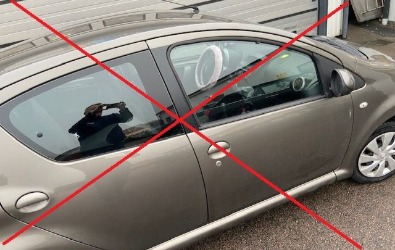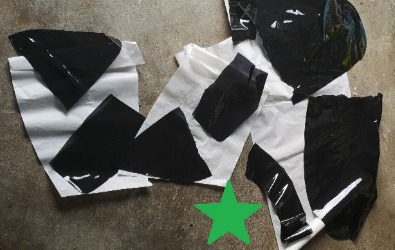Photograph a car body correctly
Many cars have almost identical bodies and can sometimes be difficult to distinguish even for a trained eye, so good pictures with all the details are important and very helpful to us. How to photograph your car's body for a complaint case.
1. Squat down so that the camera is level with the exterior rear-view mirrors when taking pictures
2. Keep a distance , usually at least 3 meters depending on the car, so that you get all the details such as headlights, grille, door sides, front and rear shock absorbers, etc. It is usually through the details that we can determine the exact body model
1. Photograph from behind

Wrong: Do not photograph the car from behind like this

Correct: Photograph the car from behind as follows.
2. Photograph from the side

Wrong: Do not photograph the car from the side like this

Correct: Photograph the car from the side like this.
3. Photograph from the front

Wrong: Do not photograph the car from the front like this.

Correct: Photograph the car from the front like this.
Photograph a complaint correctly
How to photograph your car and the films so that we can help you in the best way with your complaint matter.
1. Photography from the outside

Wrong: Detail pictures of gaps cannot be used to handle a complaint case.

Correct: You need to see the entire box and the film to be able to assess the assembly and possibly. production defects.
2. Photography from the inside

Wrong: Detail pictures of gaps on one side of eg a rear window can not be used to handle a complaint case.

Correct: Regardless of whether there is a fault on one side or if there is a fault on both sides, an image is needed that shows the entire film so that you can see both sides of the glass to be able to handle the complaint matter.
3. Measure and enter adjustments

Wrong: Do not photograph images on scales as it becomes a question of interpretation which dimension the image shows.

Correct: Always enter dimensions printed in text and in millimeters. (NOTE! Does not need to be specified in an image. The above is just an example)
4. Always mount before shooting

Wrong: The film must always be mounted on the inside to be able to judge the fit and size. Pictures of film placed on the outside of the glass to assess fit can not be accepted as a basis for complaint (unless the error is very obvious).

Wrong: Images of semi-assembled film can not be used in a complaint case as it is not possible to assess either the size or fit of film that is not final assembled (unless the error is very obvious).
5. Photograph a transport damage

Wrong: In order to be able to make a complaint about a transport damage, you do not need a picture of the missing goods but of the damage.

Correct: Photograph the entire package so that you can clearly see the damage when you make a claim for transport damage.
6. Cut and shoot films

Wrong: The film must be cut into pieces so that it cannot be reused or resold in order to invoke one of our guarantees.

Correct: All pieces are shown in the picture and are cut in the middle. Good there.


